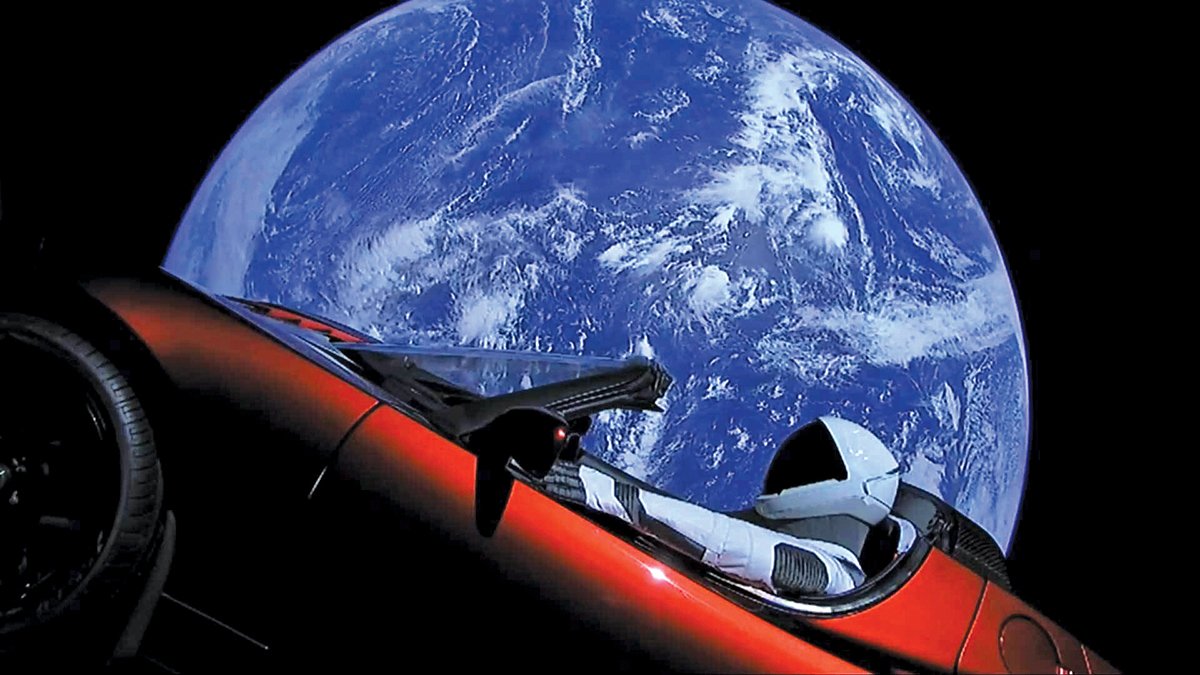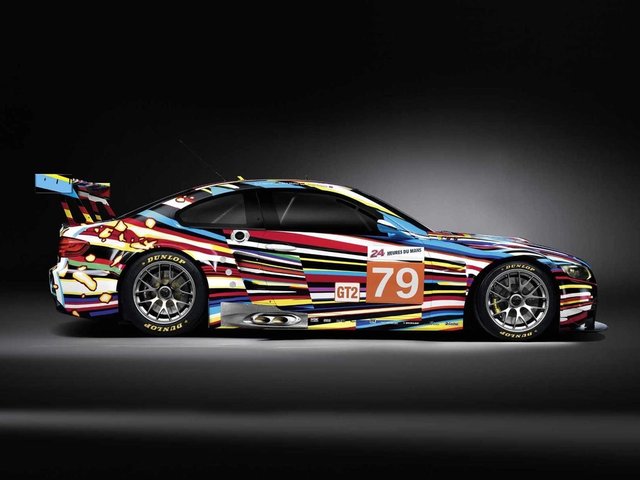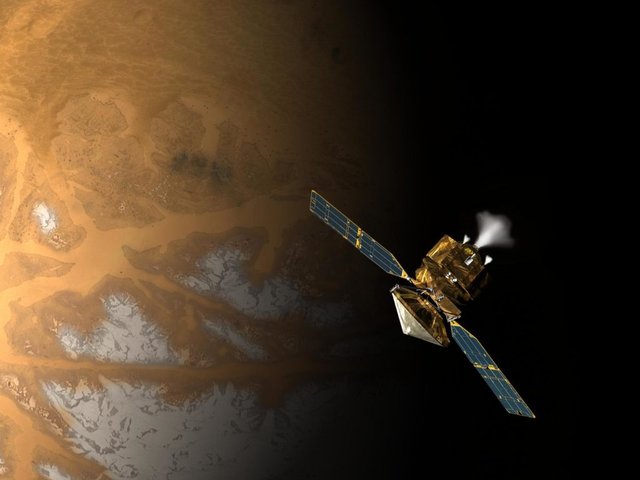The space-travel entrepreneur Elon Musk launched his company SpaceX’s Falcon Heavy rocket on an unmanned test flight on 6 February—the first step in his plan to colonise Mars and make us a “multi-planetary species”.
The most powerful rocket for 45 years carried in its nose an unlikely load: a red Tesla sports car belonging to Musk, with a mannequin named Starman in the driver’s seat. As it set off on its journey into Mars orbit, with David Bowie’s Space Oddity blaring out of the stereo, images of the car in space were live-streamed back to Earth. Almost immediately, Twitter raised the question: is the red Tesla flying through space a work of art? A sculpture in orbit?
“Starman is the most audacious work of conceptual art in history and Elon Musk is the most audacious conceptual artist ever,” wrote one user. Another tagged the UK artist Damien Hirst, asking him: “How do you feel now that Elon Musk has just created the world’s most stunning work of art?”
Most of the curators and other art-world figures we canvassed strongly demurred from the public’s enthusiasm. For them, the car in space is, at best, a work of advertising and, at worst, “junk” or “garbage”.
Deyan Sudjic
Director, Design Museum, London
“This is less a conceptual art work and more a magnificently conceived piece of advertising.”
Stephen Bayley
Author and co-founder, Design Museum, London
“A Tesla in space will be remembered long after legitimate automobile art has been forgotten… but not before. From Marinetti to Sonia Delaunay and on to Richard Hamilton and Richard Prince, cars have been appropriated by artists. In many ways over the past century, cars even usurped the role of art, being symbols of collective yearnings and expressions of our need for power and prestige. And, of course, sex. But Elon Musk expensively launching garbage into space does not pass any sensible test for art. It rises not very far above a publicity stunt…although it is PR of uncontaminated genius. Let’s not forget, Tesla, the Serbian-American engineer and inventor Musk named his car company after, was, himself, out there on the blurred margins of sanity. His eyes had turned blue because his brain was used so much, he said. He was obsessed with a ‘death ray’ that would transmit electricity and believed that flexing your toes increased your IQ. Additionally, he kept pigeons in his New York hotel room. Would you buy a car named after this man? Many do. Many more now will.”
Mason Leaver-Yap
Associate curator, KW Institute for Contemporary Art, Berlin
“I can’t believe an art publication would waste my time on such a pointless question. Maybe next time you can ask questions about the communities and matters in which I’m invested, like, say, Transmission [an art space in Glasgow that recently lost its government subsidy] and arts funding in Scotland. Now wouldn’t that be novel?”
Peter Weibel
Director, ZKM Center for Art and Media, Karlsruhe
“Human beings are living in different spheres. From mother’s womb to the atmosphere, people are always surrounded by a life-supporting and protecting envelope. The car is a mobile envelope, a symbol of individual sovereignty and mobility. The earth rotates on its own axis and around the sun. If a red Tesla is rotating around the earth and therefore also around the sun, we have a triple rotation, which exemplifies man-made mobility on a cosmic scale. Humanity reaches the point of galactic sovereignty and mobility. The car as artificial star can be a signal of triumph or warning, demonstrating the extent to which humanity can break in and out from the natural ecosystem, from the environmental protecting envelope.”
David Walsh
Founder, Museum of Old and New Art, Tasmania
“The Falcon Heavy rocket has 27 engines. It’s really, really hard to make 27 engines work together. The first time they blow up. The second time they blow up... and then the nth time they work and Mars becomes a legitimate option for the human race.
“Those 27 engines took one car with no engine toward Mars’s aphelion [the point in the orbit of a planet at which it is furthest from the sun]. It has one electric motor. Pretty soon, if we are going to save ourselves from moving everyone to Mars, all cars will have electric motors. But even if that doesn’t happen, thanks to those 27 engines, there is still hope.
“And if we save ourselves, the most important display at the Smithsonian or the Metropolitan Museum of Art will be a beautiful object, designed by Lotus, electrified by Tesla, launched into space last month, and perhaps returned to Earth by Tesla or China or someone we’ve not yet heard of.
“Wonderfully, wistfully, it might not be a flag at the finish line, as the human race is run; it might be this emblem of our maturity.”
Omar Kholeif
Senior curator and director of global initiatives, Museum of Contemporary Art, Chicago
“I think Elon Musk is a genius who is changing our world and, PR stunt or not, I feel we have a tremendous amount to learn from this visionary spirit in the myopic world of art.”
Karen Archey
Curator of contemporary art for time-based media, Stedelijk Museum, Amsterdam
“It is a compelling contribution to the aeons-old lineage of space junk.”
John Darlington
Executive director, World Monuments Fund Britain
“Compare and contrast: in Antarctica, the international community has agreed that human intervention should be kept to the barest minimum. Barring a few selected camps, scientists and visitors have to remove everything with them so as not to endanger a fragile ecosystem.
“In space, there are now over half a million pieces of space debris, alongside 4,600 satellites, a Russian golf ball, several astronaut’s gloves, the ashes of Star Trek’s creator and now, one Tesla car.
“I take my hat off to Elon Musk as a genius and a visionary, and the Tesla is a beautiful thing. But I just wish he’d teamed up with James Dyson to make a very beautiful interstellar vacuum cleaner instead.”
WHAT THE PUBLIC SAYS
This is a great work of art. Perhaps the greatest ever. Bravo, sir. Bravo.
— John Esmay (@nonprsnofcollar) February 8, 2018




